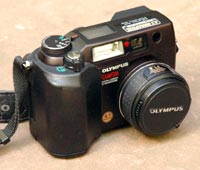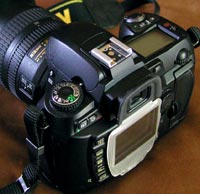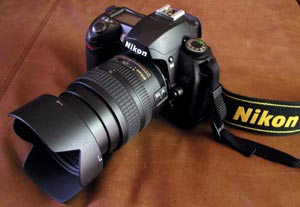| The Equipment I Use | |||||
| I purchased my first camera when I was a junior in high school—a Ricoh XR-2 35mm SLR. I was preparing for a trip abroad and wanted to record the wonders that such an adventure promised. The proprietor of Stowe Camera gave me a quick run-down on exposure settings of this simple, analog-metered SLR and with my first roll of test shots, I discovered that recording the wonders of the world around me was a much deeper subject than I had ever imagined. The mechanics of operating the camera came easily and I found that I had an eye for composition, but about the art-form, there is so much to learn. As Ansel Adams put it, |
|||||
|
|
A great photograph is one that fully expresses what one feels, in the deepest sense, about what is being photographed. |
||||
|
Attempting to adequately express what one feels is a life-long quest, and in a life-long quest, one tends to accumulate baggage. Over the years, I collected a couple of lenses to supplement my Ricoh’s 50mm f/2: a Cimko 24mm f/2.8, a Sakar 75-200mm f/4.5 and a slew of filters and gadgets. In the midst of her undergraduate days, my wife—girlfriend at the time—took a darkroom photography course at Johnson State College (VT). In her enthusiasm for her new-found passion, she volunteered to assist her professor, Torry Zolnowski with darkroom tasks and over the course of the semester, the two became life-long friends. Torry’s brilliantly creative work has always been a driving inspiration for Amber and before her course was even completed at Johnson, Amber and I had already set up a darkroom in the basement of the house we were renting in Stowe Village. The darkroom reinvigorated my interest in photography and initiated a new phase in our photographic pursuits. I replaced Amber’s aged Nikon F-2 with the more technologically advanced Pentax A3 which allowed us to share lenses, since my Ricoh also employed the Pentax K-mount. I feel I got the better end of this arrangement, as the A3’s mid-range zoom, a Tokina 28-70mm f/3.5-4.5 quickly became my favorite lens. Amber replaced our cold-war era, atomic-bomb-looking “Tower” enlarger with a Durst she found at a lawn sale and we enjoyed the creative freedom of total control over all aspects of our black and white developing and printing. Various geographical moves to our respective grad schools, then the physical confines of initial apartment life in Boulder, Colorado pretty much put an end to our darkroom work. I sorely missed those long, late-night hours at the enlarger’s easel, illuminated by the comforting orange glow of the safelight. But with the advent of consumer digital photography, a solution was in sight. I found that I could easily apply my computer knowledge to fill the darkroom gap; all I needed was a decent digital camera.
|
|||||
|
|
|||||
|
|||||
| It’s hard learning to live with vivid mental images of scenes I cared for and failed to photograph. It is the edgy existence within me of these unmade images that is the only assurance that the best photographs are yet to be made. |
|||||
Copyright © 2004 - 2011 Brian Zegarski, all rights reserved. |
|||||


